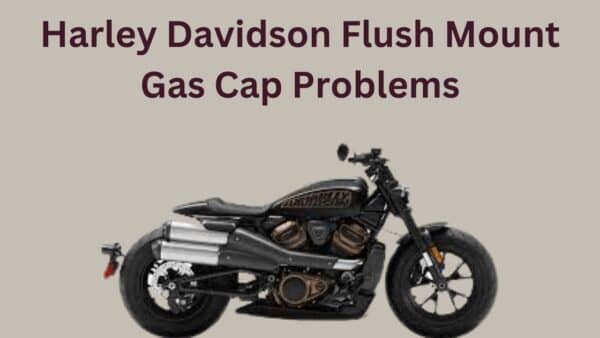
The Kawasaki Voyager 1700 is a flagship in the touring motorcycle segment, renowned for its robust performance and unmatched comfort on long journeys.
However, like many mechanical marvels, the Voyager 1700 lacks challenges. Several riders have highlighted specific concerns over the years, which serve as a testament to the complex interplay of components and systems in modern motorcycles.
This article will explore the common problems and their solutions for Kawasaki voyagers, which riders have reported over time.
Let’s dive in!
Kawasaki Voyager 1700 problems and solutions
The Kawasaki Voyager 1700 is a well-regarded touring motorcycle known for its comfort and reliability.
However, like any machine, it has its share of everyday issues. Here’s a brief overview of some problems encountered by riders and their potential solutions:
Ignition wire short circuits
The ignition wire plays a pivotal role in a motorcycle’s ignition system. It is responsible for transmitting electrical power from the ignition system to the spark plugs and ensuring a timely spark for combustion.
If a short circuit happens, it will disrupt the electrical flow and lead to multiple complications, such as engine misfires or a complete failure to start.
What Causes the Ignition Wire to Short Circuit?
Wear and Tear
The most common reason is the natural degradation of the wire over time.
Constant exposure to heat and vibrations can cause the wire insulation to deteriorate, leading to shorts.
Improper Installation
If the wire isn’t correctly routed, it might rub against other motorcycle parts and cause the insulation to wear off quickly.
External Damages
Accidents or exposure to corrosive elements can damage the wire or its insulation, making it susceptible to short circuits.
Solutions for Ignition Wire Short Circuits
Predictive Maintenance
When your ignition wire is likely to fail based on real-time data from the bike’s sensors.
By analyzing factors like engine heat, vibrations, and electrical flow, notify potential issues before escalating.
Automated Diagnostic Tools
Tools can pinpoint issues within seconds, assisting in swift troubleshooting by connecting your motorcycle to such a tool.
You can get a detailed breakdown of potential or existing issues, such as a short circuit.
Smart Installation Guides
Ensure that any installation or replacement of parts is done correctly.
You can get real-time guidance on routing and fitting ignition wires using augmented reality apps, thereby reducing the risk of error.
Limited power for the engine
The Kawasaki Voyager 1700’s engine sometimes may not deliver the expected punch.
Several factors can lead to this power limitation:
Fuel System Issues
Clogged fuel injectors or malfunctioning fuel pumps can restrict the amount of fuel reaching the engine. It can result in reduced power and sluggish performance.
Air Filter Problems
When your bike air filter is dirty and clogged, it will reduce the amount of air reaching the combustion chamber. Engines require a precise mix of air and fuel for optimal performance.
Spark Plug Degradation
Worn-out or fouled spark plugs can hinder fuel ignition in the air combustion chamber and cause power loss.
Electronic Issues
Modern motorcycles like the Voyager 1700 come with advanced electronic systems. Faults in the ECU (Electronic Control Unit) or other electronic components can impact engine power.
Solutions to Regain the Engine’s Power
Regular Maintenance
Regularly servicing the bike and replacing essential components like the air filter and spark plugs can prevent most power-related issues.
Fuel System Cleaning
If you suspect the fuel system is the culprit, consider using a cleaner or cleaning the injectors professionally.
Electronics Diagnostic
If the basic maintenance steps do not resolve the issue, it might be an electronic glitch. Modern diagnostic tools can identify and rectify faults in the ECU and other electronic systems.
Seek Expert Help
Sometimes, the root of the problem might not be immediately apparent. In such cases, it’s always advisable to consult a certified technician or mechanic who can provide a more in-depth analysis.
The engine is not getting enough air.
The engine is the heart of any vehicle, and for it to function efficiently, it requires a perfect mix of fuel and air.
If there’s a disruption in this balance, then it can decrease fuel economy. For the Kawasaki Voyager 1700, an insufficient air supply can manifest in various ways.
Reduced Acceleration
You might notice that the bike is sluggish when trying to accelerate or doesn’t respond as quickly as it used to.
Poor Fuel Economy
An engine not getting enough air will consume more fuel, leading to more frequent stops at the gas station.
Irregular Idling
If your bike’s engine is idling unevenly or stalling, it could be due to an air supply issue.
Causes and Solutions
Dirty or Clogged Air Filter
A dirty or clogged air filter is the most common reason for an engine not getting enough air. Over time, dirt and debris accumulate in the air filter, reducing efficiency.
Regularly inspect and clean the air filter. Depending on the condition, you may also need to replace it. Ensure that the replacement is compatible with your Kawasaki Voyager 1700.
Faulty Air Intake System
If there’s a leak or obstruction in the air intake system, it can hinder the flow of air to the engine.
So visually inspect the air intake hoses and pipes for damage or blockage. If you find any issues, fixing them immediately is advisable.
Damaged Sensors
Modern motorcycles are equipped with sensors that monitor and adjust the air-fuel ratio. A malfunctioning sensor might not detect the proper amount of air needed, causing a disparity.
It would be best to use a diagnostic tool to check error codes related to air intake or sensors. If a faulty sensor is identified, replace it with a genuine part.
FAQ
What is the problem with the 2011 Kawasaki Vulcan 1700?
The 2011 Kawasaki Vulcan 1700 faced several user-reported issues, including problems with its electronic throttle valve (ETV) system.
Some riders experienced abrupt throttle response, especially at low speeds, which affected the bike’s overall rideability.
There were also concerns about its stator and voltage regulator, with specific units having premature failures.
However, it’s worth noting that many Vulcan 1700 owners had positive experiences with their motorcycles, and the problems mentioned above didn’t affect all units.
What is the gas mileage on a Kawasaki Voyager?
The Kawasaki Voyager, part of the Vulcan 1700 series, is a touring motorcycle known for its comfort and power.
Its gas mileage can vary based on factors like riding conditions and maintenance, but on average, the Kawasaki Voyager gets approximately 35-43 miles per gallon (mpg).
It’s worth noting that individual results can vary and for the most accurate mileage specific to a particular model year or riding condition.
How much horsepower does a Kawasaki Voyager 1700 have?
The Kawasaki Voyager 1700 is a part of the Vulcan 1700 series and is equipped with a liquid-cooled 1700cc V-twin engine. This power plant produces approximately 82 horsepower and 108 lb-ft of torque.
However, these figures might vary slightly depending on the specific model year and any aftermarket modifications.
For the most precise numbers, it’s advisable to consult the owner’s manual or the manufacturer’s specifications.
Wrapping Up
The Kawasaki Voyager 1700 is an esteemed motorcycle in the touring segment for its comfort and power, but it has not been without its share of challenges.
Issues with the engine system and components like the stator and voltage regulator have been reported.
Such problems have led to varying degrees of inconvenience for riders, ranging from subpar rideability due to throttle response concerns to the need for part replacements and recall.
You might love to read this!

Ahtsham Younas is a passionate blogger and content writer. He loves to ride motorcycles and learn the mechanical process behind the motorcycles.
He has been writing articles in the motorcycle industry since 2019 and has learned many things about motorbike niches.


